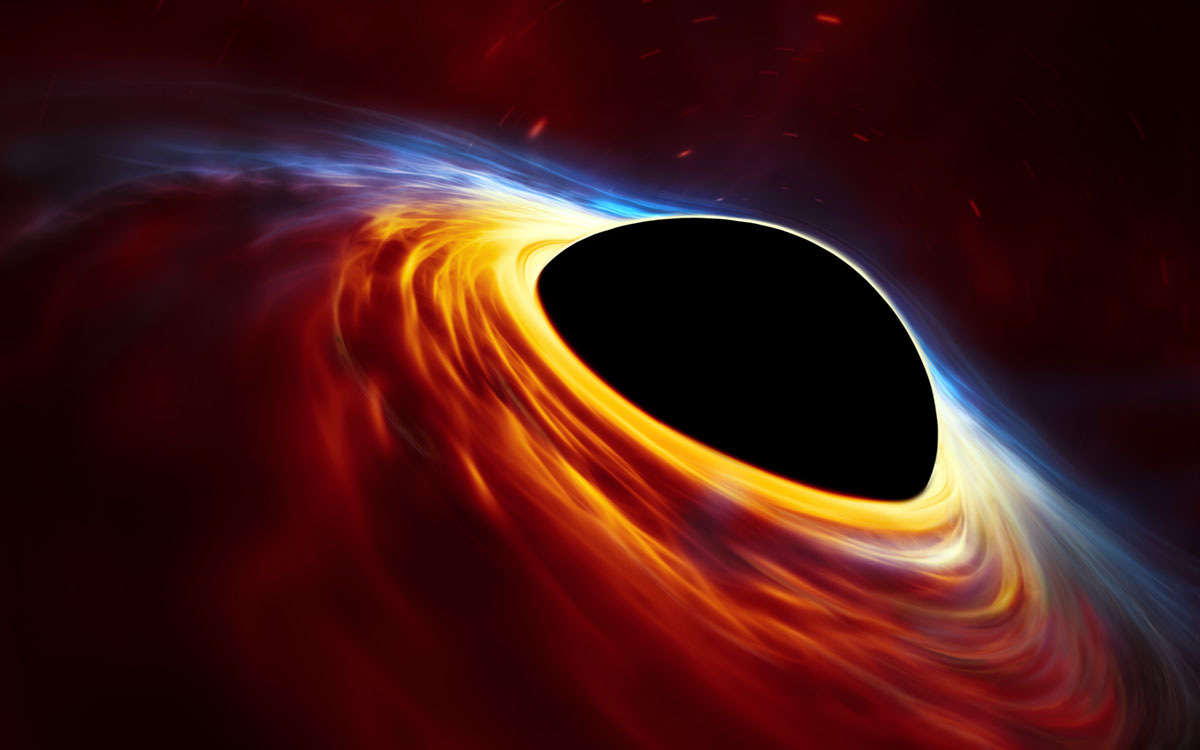in the beginning, there was the black hole

Just for a little astrophysics fun, let’s imagine that we’re back in the early days of the universe and the very first generation of stars is about to be born. Since the entire hot and dense universe is filled with gas, those stars will be enormous by today’s standards. While most modern stars tend to stay under the 150 solar mass limit, these titans could conceivably tip the scale at approximately 1,000 or so. Due to their enormous size, they’d be extremely short lived, burning fast and hot in just a few million years if not less, and end with spectacular pair- instability supernovae. As we covered before, due to their enormous mass, they wouldn’t simply disintegrate into a radioactive clouds like a 130 to 250 solar mass star, but collapse into huge, ravenous black holes.
The fiery death of these monstrous suns is currently one of the leading explanations for the extremely distant gamma ray bursts observed since the height of the Cold War, so we know there’s some solid evidence which points to their existence billions of years ago. But the big question is what happened to them after they died. A black hole formed by the death of an enormous star will be a force to be reckoned with and persist for a very, very long time. In fact we can get a good estimate for its size and lifetime. Assuming that approximately half of our hypothetical progenitor star will be blown out by the blast and leave 500 solar masses worth of material to slow down and fall back into a gravitational ghost, the math looks somewhat like this…
rs = 2Gm / c2 = 2(6.673 × 10–11 m3 kg-1 s-2)(9.94 × 1032 kg) / 8.99 × 1016 m/sec = 1,476,314 m
tev = 3M / 3K = 3(9.94 × 1032 kg) / 3(3.89 × 1015 kg3 s-1) = 8.24 × 1082 sec or 2.61 × 1075 years
So this nearly 3,000 kilometer wide brute would be one of the last things to exist in the known universe and in its long life, we should probably expect it to merge with other black holes and gulp down plenty of gas to grow even bigger, maybe even to supermassive proportions, and extending its lifespan to obscenely long stretches of time. Considering that it was far from the only one, one might ask whether we should just look for the center of the universe by the biggest concentration of black holes we can find and finally establish a firm grip on our location in the cosmos. But that’s not how things work. Since the birth of these black holes billions of years in the primeval past, the universe has expanded and because the expansion was driven by space-time itself, the monstrous remnants of the first stars have been moving trough the early spirals and webs of galaxies into an immense, homogenous mix of stars, planets, gas and dust, surfing on the fabric of space.
Likewise, the growth of these black holes is governed by rules similar to natural selection. Some binged on a vast cloud of gas nearby, others swallowed up their neighbors or were swallowed by their bigger brethren as they moved through the cosmos. Some remained close to their starting mass, others bulked up just a bit and a few grew to absolutely titanic proportions. There’s no telling how old a black hole is and from where it came unless you’ve tracked its movements from birth to the present. And all of this moving and shuffling through an isotropic cosmos in which the remnants of the first stars have been distorted beyond recognition implies that the center of our universe would most probably be a very unremarkable place which would be very difficult, if at all possible, to pin down as the hypocenter of the Big Bang were we to travel there at any point in the future.





